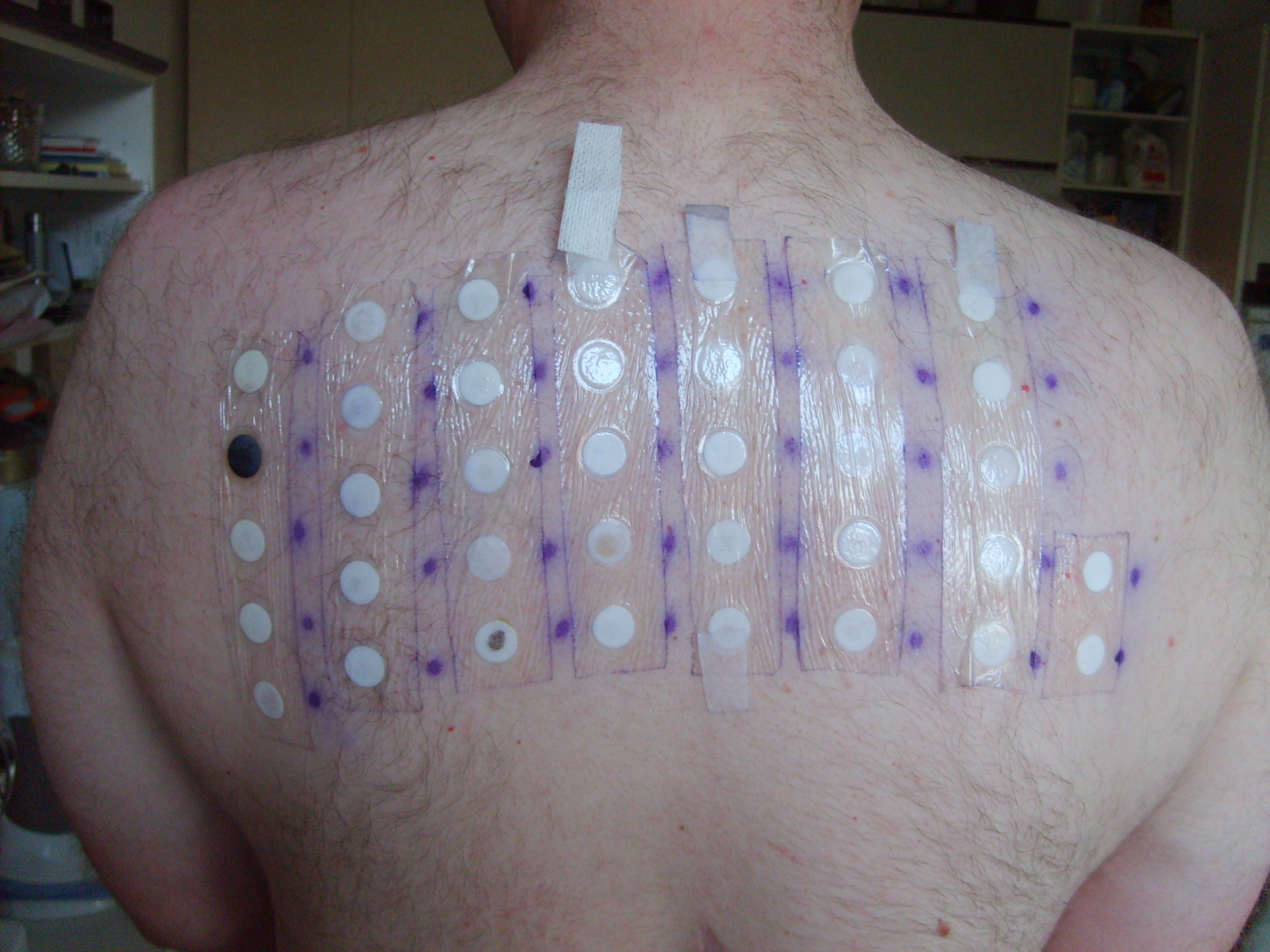The comparison with reference data is crucial for the evaluation of results from animal-free tests. However, these are often only available from animals, as decades of animal test publications are available. However, there is the problem of species differences, which then have to be taken into account somehow.
This is not the case with skin sensitization: there are countless studies on humans and corresponding publications. The scientists collected data from thousands of human predictive patch tests to assess skin sensitization from 1555 publications. Such patch tests are a kind of allergy tests that are used to determine whether a sensibility develops. The researchers developed an evaluation system to assess each test for reliability.

An allergy test on humans.
Photo: Jan Polák, CC BY-SA 3.0, Wikipedia.
As a result, they developed a database containing information for 1366 unique substances. The database is publicly accessible and supports the development of new methods in the field of skin sensitization.
Original publication:
Strickland J, Abedini J, Allen DG, Gordon J, Hull V, Kleinstreuer NC, Ko HS, Matheson J, Thierse HJ, Truax J, Vanselow JT, Herzler M. A database of human predictive patch test data for skin sensitization. Arch Toxicol. 2023 Nov;97(11):2825-2837. doi: 10.1007/s00204-023-03530-3. Epub 2023 Aug 24. PMID: 37615678; PMCID: PMC10504114.
Further information:
https://factor.niehs.nih.gov/2023/10/science-highlights/chemical-safety-testing-database
https://www.oecd-ilibrary.org/environment/guideline-no-497-defined-approaches-on-skin-sensitisation_b92879a4-en




 Dr. rer. nat.
Dr. rer. nat. Menschen für Tierrechte - Tierversuchsgegner Rheinland-Pfalz e.V.
Menschen für Tierrechte - Tierversuchsgegner Rheinland-Pfalz e.V.